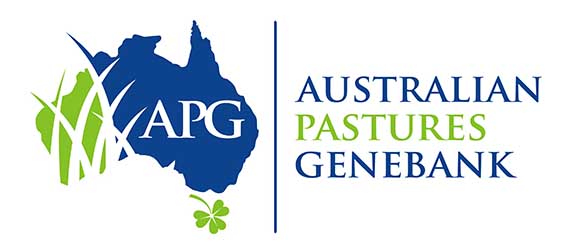Australian Pastures Genebank
The Australian Pastures Genebank (APG) is the national pasture and forage genetic resource centre.
It is located at the Waite Institute in Adelaide and operated by the South Australian Research and Development Institute (SARDI) on behalf of government and industry stakeholders.
The APG conserves the diversity of Australia's pasture and forage species, as the basis for enhanced agricultural productivity and environmental preservation. It underpins the future development of pasture varieties to meet industry feedbase challenges, for use nationally and internationally.
APG expertise
The online systems that hold information about plant genetic resources, GRIN-Global and Genesys, now include climate and soil properties as well as morphological and phenotypic data (including images). This is becoming increasingly important as mixed crop-livestock and livestock-intensive systems are more widespread. The APG can assist breeders to respond to climatic constraints such as changing rainfall patterns.
The APG has a user-creator model where experts in temperate and tropical species from South Australia, Queensland, Tasmania, and Western Australia collectively regenerate, characterise, and rationalise this taxonomically diverse collection.
Expertise in Medicago and Trifolium taxonomy (66% of the collection) is highly specialised and does not exist anywhere else in the world. The APG also has on-site access to SARDI pathologists, virologists, and entomologists that assist with seed regeneration and biosecurity requirements for national and international distribution.
The collection
The APG holds one of the world's most diverse and significant tropical and temperate pasture and forage collections. Almost 90% of the accessions held were collected from all over the world by Australian scientists over the past 70 years. The seed is globally unique and not held in any other genebanks.
Help searching and ordering
Help searching and ordering
Watch these short videos on YouTube to help you:
Operational plan
The APG 5-year operational plan 2023–2028 () includes the delivery of 3 core services:
- Implementing the treaty to make germplasm available and allow for fair and equitable sharing of the benefits arising from their use.
- Improving genebank health and seed conservation.
- Developing information systems to make the genebank more attractive to users.
The APG will acquire, document, conserve, maintain and distribute plant genetic material. This involves mandate pasture and forage species, in the form of seed and associated data.
We make small quantities of mandated germplasm and related information available, both nationally and internationally. These benefit food and agricultural scientific research, plant breeding, and genetic resource conservation or education.
The Australian Pastures Genebank 2024 Annual Report () details progress towards the activities listed in the 5-year operational plan.
APG standards
APG standards
The APG has national and international responsibilities to operate within:
- the framework of the International Treaty on Plant Genetic Resources for Food and Agriculture
- the rules and standards of the Multilateral System.
Accordingly, seeds and associated data will be provided:
- under a Standard Materials Transfer Agreement
- in accordance with the APG Seed Distribution Policy ().
Undertakings
Undertakings
The APG delivers the following objectives:
- Establish and maximise mandated germplasm collections to meet foreseeable national breeding requirements.
- Support the introduction, quarantine and biosecurity of mandated germplasm.
- Build relationships with scientists to coordinate germplasm introduction and regeneration programs.
- Keep interested scientists informed of new accessions to the collection.
- Manage and administer mandated germplasm, per the international Genebank Standards for Plant Genetic Resources for Food and Agriculture.
- Ensure material is duplicated off-site as a safety deposit.
- Provide online access to public information of mandated germplasm.
Stakeholders
- Meat and Livestock Australia
- Australian Wool Innovation
- Grains Research and Development Corporation
- Dairy Australia
- AgriFutures Australia
- Tasmanian Institute of Agriculture
- Department of Primary Industries and Regional Development – Western Australia
- Queensland Government
- Department of Agriculture, Fisheries and Forestry
Contact
Dr Alan Humphries – Curator, Australian Pastures Genebank
Phone: 0427 090 959
Email: alan.humphries@sa.gov.au

